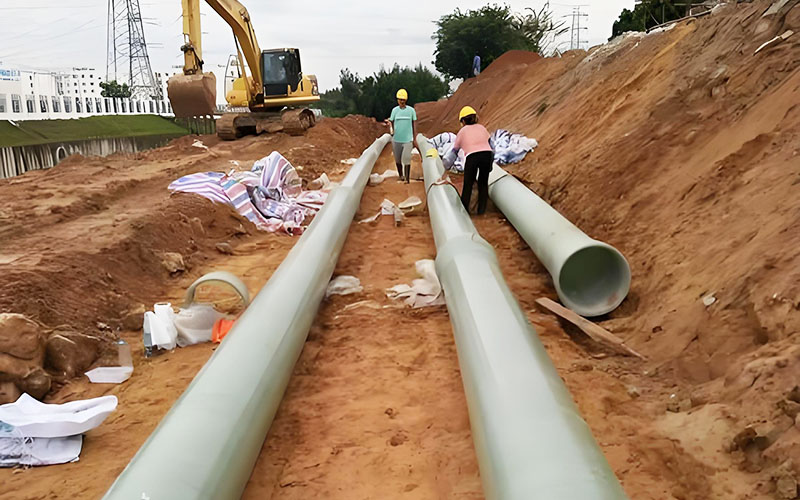GRP (Glass Reinforced Plastic) pipes are a type of composite pipes made of a polymer matrix reinforced with glass fibers. They are known for their excellent corrosion resistance, lightness, and high strength. Due to their durability and customizability, GRP pipe is widely used in a variety of industries, including water and wastewater treatment, chemical processing, and industrial piping, among others.

The main materials used to produce GRP pipes include glass fibers and polymer resins, where the glass fibers provide structural reinforcement and determine the strength and stiffness of the pipe. The polymer resin acts as a matrix, binding the glass fibers together. Commonly used resins include polyester, vinyl ester, and epoxy. The choice of resin affects the chemical resistance, thermal stability, and overall performance of the pipe.
1. GRP pipes can be applied in water supply and wastewater treatment systems for transporting drinking water (food grade resins), sewage and treated wastewater. Their corrosion resistance and durability make them ideal for these applications.
2. GRP pipes are used in various industrial applications to handle corrosive chemicals, acids and other corrosive substances. Their strength and use for handling corrosive chemicals, acids and other corrosive substances.
3. GRP pipes are often used in marine and offshore applications, such as seawater inlet and outlet systems, fire water lines and ballast systems. Their resistance to saltwater corrosion ensures their long-lasting performance in marine environments.
4. GRP pipes are used in public infrastructure projects, including drainage systems, irrigation and sewer lines. Their light weight and ease of installation make them a top choice for large projects.